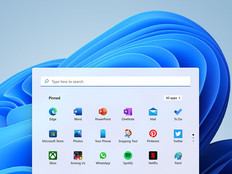5 Tips for Managing a System Upgrade
System upgrades are a routine part of every agency IT department's workload. While never easy or without risk, upgrading a system that everyone in the agency uses can be done as effectively and seamlessly as possible when the right steps are taken.
Here are five tips to ensure system upgrades are successful.
1. Understand why the system upgrade is being done.
This isn't as simple as it sounds. Any interruption to end-user productivity has hidden costs and, in reality, no system upgrade is perfectly seamless. Keeping systems up to date is critical, but an upgrade that doesn't have a clearly defined return on investment is best not started. Don't just consider the vendor price. Be sure to also consider intangibles such as time spent on design work, personnel hours for implementation, support team training and the user's loss of productivity during orientation sessions. Intangible costs can have a significant impact on the financial scope of the project.
2. Know every detail about the task at hand.
Agency-wide system upgrades are never singular in scope. They touch on several, if not all, operational areas within the agency. For the system itself, this includes third party apps, physical drivers, security standard operating procedures, client side connectors and any other factors that require interoperability with other systems. All associated components must be ready to move forward before the system itself can be upgraded.
3. Don't let management have false notions about the project.
Unrealistic expectations can set up the project to fail. Establish a concrete understanding of the project's risks and realistic expectations with both management and the project team to ensure everyone is on the same page when work begins. Once the understanding is established, lock it in place with a thoroughly detailed and indelible project plan. A concrete plan keeps things focused and less susceptible to well intended meddling that could derail an otherwise good upgrade strategy.
4. Be sure the support team is well informed.
Let the support team know clearly what work is being done and what the users will see when the upgrade is complete. Since team involvement is better than one-way directorates, hold occasional status meetings to assure users that their issues or concerns are being addressed quickly and accurately.
5. Provide meaningful orientation for the users of any front-end processes affected by the system upgrade.
Be sure to cover the whole agency, not just leaders and management. Don't expect orientation points to propagate to the users automatically. Work with your agency’s training staff to provide status updates and learning tools directly to the personnel who will be working with the upgraded system. Strive to have nothing interfere with that efficiency when the newly upgraded agency-wide system goes live.
For more insights from Zabloudil, check out his book, "Excellence in IT: Achieving Success in an Information Technology Career."








